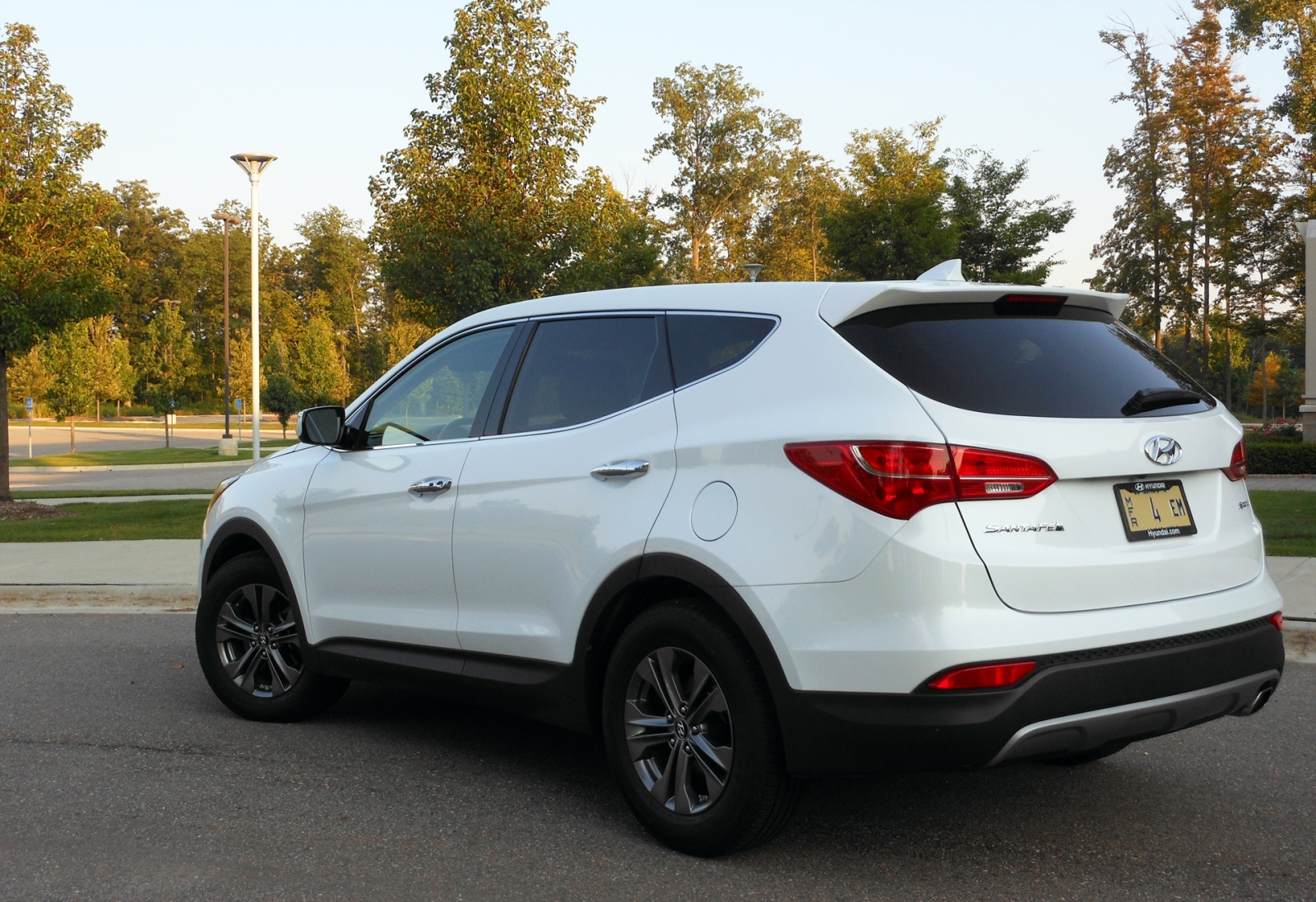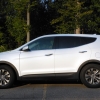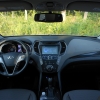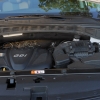William Maley
Staff Writer - CheersandGears.com
November 13, 2013
The past few years has seen Hyundai rise as a dominant player in automotive marketplace. Vehicles like the Sonata, Elantra, and the Accent have shown how far the Korean automaker has come and being rewarded for their efforts. There is one segment that Hyundai hasn't quite cracked yet; crossovers. It's not for the lack of trying. Hyundai has been trying its darndest since the first-generation Santa Fe rolled off in 2002. Some of their efforts have included making the second-generation Santa Fe larger and introducing a smaller and larger crossover to complement it. That didn't quite work, so Hyundai went back to the drawing board and came up with a new idea. Last year, they introduced the next-generation Santa Fes; a large seven-seat model called the Santa Fe and a new midsize model called the Santa Fe Sport. Is this idea working? To find out, I spent some time with the 2013 Santa Fe Sport.
The Santa Fe Sport is one the first Hyundai vehicles to introduce their new 'Fluidic Precision' design language. The new design language gives the Sport a very muscular and expressive presence. The front end has a comically large chrome grille and sharp looking headlight units. Along the side profile is a strong character line that starts from the front wheel well and extends all of the way to rear taillights. Hyundai's designers raked the rear windows to add a nice stylish touch. This also means rear visibility becomes limited. Finishing the Santa Fe Sport off is a set of seventeen-inch alloy wheels in a graphite finish.Heading inside, the Santa Fe Sport is a very pleasant and comfortable place to be. The dash and door panels comes with lot of soft-touch materials and leather. The center stack layout is simple and the controls are well-placed for easy reach. As for comfort, my test Santa Fe Sport came equipped powered and heated front seats for the front passengers. You can easily find a comfortable position with no sweat. The back seat passengers also have it good with more than enough head and legroom. Also, you can get the Santa Fe Sport equipped with the rear seats that adjust forward and back, recline, and provide heat.
My test Santa Fe Sport was also equipped with the optional navigation system and I have to say I was impressed. Hyundai installed their latest system which introduces a number of small changes such as improved maps and performance. The system is very easy to use and snappy. A number of automakers should take a look at Hyundai's system if they want to produce a quick and smooth infotainment system.
Now that I have talked about the exterior and interior of the Santa Fe Sport, it's time for a look under the hood.
The Santa Fe Sport is available with two engines. The one I had is the base 2.4L direct-injected four-cylinder with 190 horsepower and 181 pound-feet of torque. This was paired with a six-speed automatic transmission and front-wheel drive. All-wheel drive is an option as is the 2.0L turbocharged four-cylinder with 264 horsepower and 269 pound-feet torque.
The 2.4L does get the Santa Fe Sport moving, but you feel like it's under a lot of stress. Getting up to speed takes a few seconds longer than expected. Plus, the engine quickly runs out of breath as you try to make a pass or merge onto a freeway until the next gear hits. This surprised me a bit since this is the almost the same engine you'll find under the hood of the Hyundai Sonata and Kia Optima. I praised the Optima's 2.4L for being peppy and smooth. While the 2.4L in the Santa Fe is smooth, it is not peppy. There is an Active Eco button that helps improve fuel economy, but it reduces the engine's power. The six-speed automatic does a good job when you're leaving a stop gently or moving along smoothly. Hammer the throttle and the automatic is somewhat confused before figuring out what it should do.
EPA rates the 2013 Hyundai Santa Fe Sport FWD 2.4 at 21 City/29 Highway/24 Combined. During my week with it, I averaged 25.2 MPG.The Santa Fe Sport's ride is very comprised and quiet. Driving along the interstate for brief trip, the Santa Fe Sport exhibited minimal road and wind noise. The suspension is able to smooth out bumps and road imperfections with no problem.
If you are expecting any driving fun since it's named the Santa Fe Sport, then I need to explain the Sport is more of differentiation about the vehicle's size, not the fun-to-drive-ness. Much like the other crossovers in the class, the Santa Fe Sport has a bit of lean when turning due to its suspension tuning. The Santa Fe Sport also features Hyundai's Flex Steer which allows a driver to choose how much weight they want in their steering. In my review of the Elantra GT, I found myself leaving the system in Normal since the other two options were on the extreme. The same holds true for the Santa Fe Sport. Using the flex-steer system, I found myself using the Normal setting more than Comfort (too light) and Sport (too heavy).
At the end of the week, I found the Hyundai Santa Fe Sport to be a very competent crossover. Hyundai focused on the areas that are important to buyers in this class; comfort, value for money, and styling. The only real concern I have is with the base engine as I found it to be somewhat stressed. For a fair number of buyers, the 2.4 will be ok if you equip it with front-wheel drive. If you are considering all-wheel drive, I would push for the 2.0T engine.
Otherwise, Hyundai seems to be going in the right direction with the Santa Fe Sport. It could be the breakout hit they are looking for.

Disclaimer: Hyundai Provided the Santa Fe Sport, Insurance, and One Tank of Gas.
Year: 2013
Make: Hyundai
Model: Santa Fe Sport
Trim: FWD 2.4
Engine: 2.4L GDI DOHC 16-Valve Four-Cylinder
Driveline: Front-Wheel Drive, Six-Speed Automatic
Horsepower @ RPM: 190 @ 6,300
Torque @ RPM: 181 @ 4,250
Fuel Economy: City/Highway/Combined - 21/29/24
Curb Weight: 3,459 lbs
Location of Manufacture: West Point, Georgia
Base Price: $24,450.00
As Tested Price: $32,175.00 (Includes $825.00 Destination Charge)
Options:
Leather & Premium Equipment Package - $2,950.00
Technology Package - $2,700.00
Popular Equipment Package - $950.00
Cargo Cover - $150.00
Carpeted Floor Mats - $100.00
Cargo Net - $50.00
William Maley is a staff writer for Cheers & Gears. He can be reached at [email protected]or you can follow him on twitter at @realmudmonster.










-3707742431.jpg.06edf8e14f4ccf35c60d4774a543cc11.jpg)



Recommended Comments
Join the conversation
You can post now and register later. If you have an account, sign in now to post with your account.
Note: Your post will require moderator approval before it will be visible.